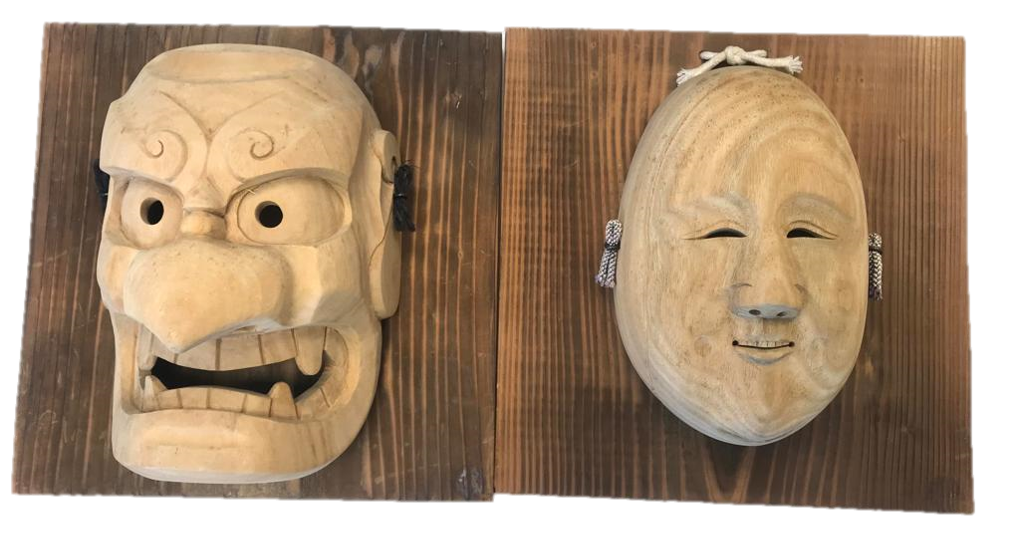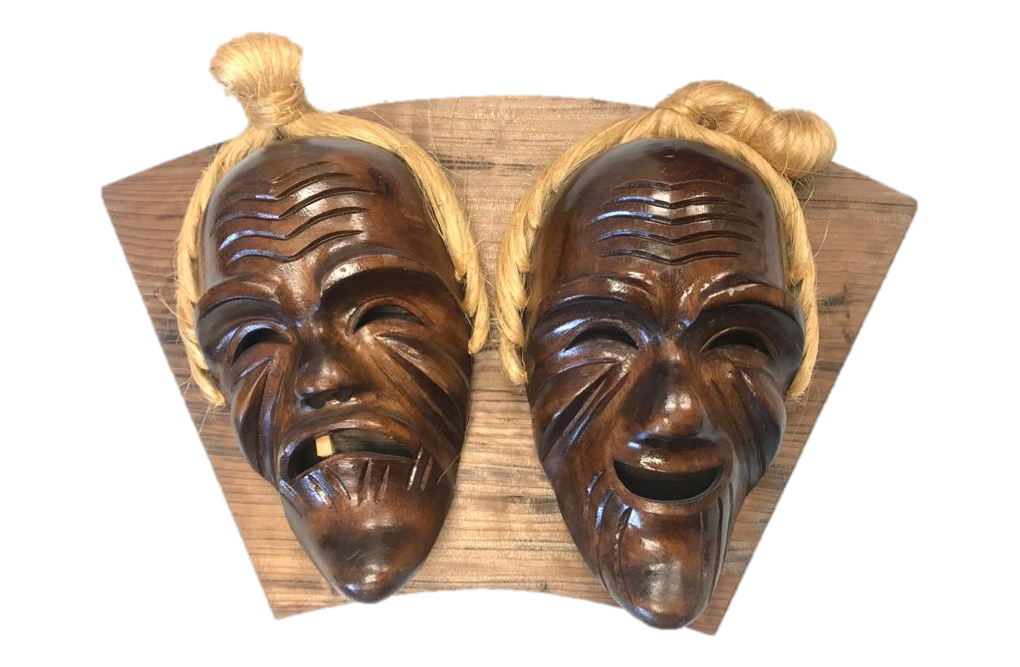Japanese Traditional Kagura Mask

Kagura is a Shinto ritual performed in thanksgiving for a good harvest and bountiful fishing (bountiful hunting), and to pray for stability in life during the year. The “Takachiho Night Kagura (高千穂の夜神楽)” of the town of Takachiho (高千穂町), Miyazaki Prefecture (宮崎県), is particularly famous and has been designated as an important intangible folk culture asset of Japan.
The Kagura masks on display are used in “Takachiho Night Kagura”, and are appreciated by visitors to Takachiho as a lucky charm souvenir that brings happiness.
They are made from camphor wood, a wood with a pleasant wood aroma, and after being rough-hewn by a carving machine, they are finished entirely by hand.
Decorative masks are mainly made of “Tajikarao-no-Mikoto (手力雄命) ”, a god of physical strength and “Ame-no-Uzume-no-Mikoto (天鈿女命) ”, a goddess of dawn, laughter, joy, good health, and happiness, who are sometimes worshipped as gods of good luck and fortune, and the masks are becoming increasingly popular as a choice of gift for others.
(Remark: Due to the sacredness of the masks, no colors can be applied on the masks)
Japanese Traditional Angama Masks

Creator: Taba Yusei
Angama masks are a must for the Angama Dance in Ishigaki-shi, which is held for 3 days starting on the 13th of the 7th lunar month and is also known as the “Bon Festival”.
“Ushumai” (grandfathers) and “Somi” (grandmothers), accompanied by a large group of men, are invited to each house to offer fortune words in front of the gods of the house that they visit.
They also engage in battles of witty and ironic exchanges with those who come to visit Angama, in order to outdo each other.
Next, everyone stands up in turn and dances the traditional warrior dance of the island like “Washi no tori bushi”, “Hato ma bushi”, “Asatoya bushi”. When the dance is over, they leave the house and go to the next one with the lively melodies of Shamisen, flutes and drums, while playing Hayashi. It is said that the masks of “Okina” and “Ouna”, which are unique to Yaeyama, act as a god of conjugal harmony or to pray for good health.

